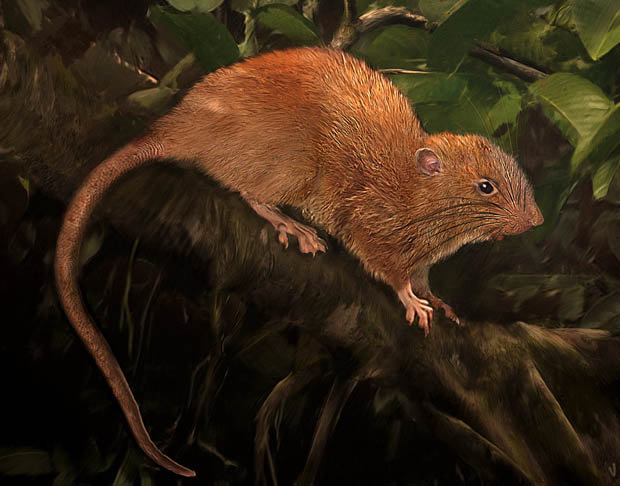NEWS
Giant Rat Discovered In Solomon Islands


The creature lives in 30ft trees on Vangulu in the Solomon Islands, in Oceania, and it had only ever been spotted by natives, leading to suspicions it was a mythical creature.
The Rat measures one-and-a-half ft long, weighs more than 2lbs and is five times bigger than the average rodent.
Mammalogist Dr Tyrone Lavery first heard rumours of the giant rat that lived in trees and cracked open coconuts with its teeth on his first trip to the Soloman Islands in 2010.
And now, after seven years of searching for the rat, Dr Lavery’s team have finally found it.
Lead author, Dr Lavery, of The Field Museum, in Chicago, said: “The new species, Uromys vika is pretty spectacular – it’s a big, giant rat.
“It’s the first rat discovered in 80 years from Solomons, and it’s not like people haven’t been trying – it was just so hard to find.”
Vika – described in the Journal of Mammalogy – are massive compared to the black rats that spread throughout the world with European colonists.
And the rats found in sewers and alleys only weigh around 200g (0.44lbs).
These rats have a strong liking for chewing circular holes into the rock hard shell of nuts to get to the meat.
Dr Lavery added: “When I first met with the people from the Vangunu Island in the Solomons, they told me about a rat native to the island that they called vika, which lived in the trees.
“I was excited because I had just started my Ph.D., and I’d read a lot of books about people who go on adventures and discover new species.”
After comparing the specimen to similar species in museum collections and checking the new rat’s DNA against its relatives and confirmed the giant rat was new, he named it Uromys vika in honour of the local name.
He said: “This project really shows the importance of collaborations with local people.”
The discovery marks an important moment in the biological study of the Solomon Islands, especially since vika is so uncommon and close to extinction.
“Finding a new mammal is really rare,” said Dr Lavery.
“There are probably just a few dozen new mammals discovered every year.
“Vika was so hard to find, and the fact that I was able to persevere is something that I’m proud of.”







